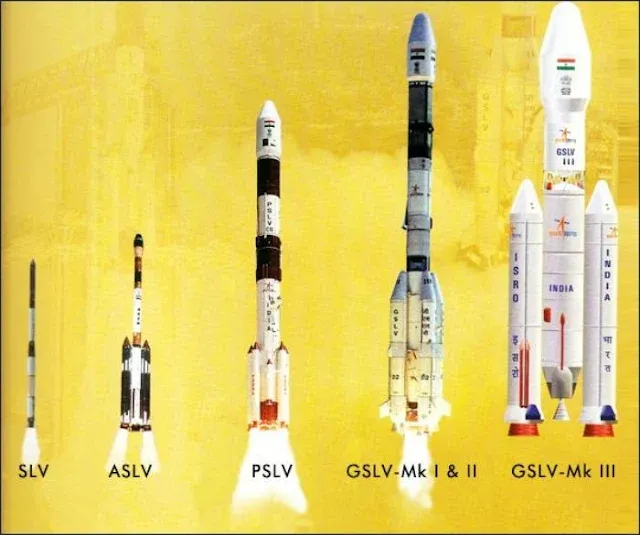1971 War,4,1993 Bombay Blast,1,26/11 Terror Attack,2,4th Round of India-China Talks,49,8th-pay-commission,1,Abbottabad,1,Abdul Qayoom Margo,1,Act East Policy,1,Admiral Karambir Singh,51,advanced multirole combat aircraft (AMCA),2,Aero India,10,Aeronautical Development Agency,1,Afghan Taliban,2,Afghanistan,39,Africa,2,AFSPA,1,AFT,1,Aghanistan,2,Agni-MIRV V's,1,Agni-V,3,Agni-VI,1,Agniveers,1,Ahmedabad,1,ai-powered-drones,1,Air Asia,1,Air Bubble,1,Air Bubble news,1,Air Chief Marshal,1,Air Chief Marshal Arup Raha,1,Air Force Station Yelahanka,1,AIR India,1,Air-Independent Propulsion,1,Airbus A330 multi-role tanker transport aircraft,1,Aircraft Carrier,4,Aircrafts,4,Airport Authority of India,1,Ajit Doval,2,Akash Air Defence Missile,2,Akash-NG Missile,1,Al Qaeda Osama Bin Laden,2,Al-Qaeda,2,Albania,1,Alexey Navalny,1,ALH Mk-III,1,all-terrain-vehicle,1,amarnath-shrine,1,Ambala,1,American Navy,1,American Predator drones,3,Amit Shah,3,Amnesty International India,1,AMPHEX 21,1,Amritsar,1,amrullah-saleh,1,Anantnag,1,Andaman & Nicobar Islands,9,Andaman-oil-discovery,1,andhra-pradesh,1,Angara,1,Angara-A5 Space Rocket,1,Anti Terrorism Day,1,Anti-radiation Missiles,1,anti-ship-missile,1,Anti-tank Missiles,4,anti-torpedo defence system,1,Antony Blinken,1,Anurag Thakur,1,ap-kgbv,1,Arabian Sea,2,Arakan Army,1,Argentina,2,Arihant Missile Submarine,2,Arjun Gun Barrel,1,Arjun Mark-1A,6,Armata Tank T-14,1,Armenia,6,Armenia-Azerbaijan War,6,Armored Vehicles,2,Arms Deal,1,Army,1,Army Commanders,1,army-of-drones,1,Article 370,1,Article-II,1,Artificial intelligence,1,Artillery,1,Arunachal Pradesh,6,ASEAN,2,Assam,1,Assam Rifles,2,Assault Operations,1,Assault Rifles,3,Asso Sherpa,1,Astra Mark 2 Missile,1,AstraZeneca,1,ATAGS Howitzer,4,Atal Tunnel,2,Atefeh-Rajabi-Sahaaleh,1,ATGMs,1,ATHOS,1,Atmanirbhar Bharat,8,Atmnirbhar Bharat,1,attari,1,Australia,15,Axiom-4,1,AZAD Kashmir,2,Azerbaijan,6,azhar-abbas,1,B-1 Bomber,1,B3W,1,Balakot Air Strike,1,Balakot Attack,1,Balasore,1,Ballistic Missile Defence,3,Balochistan,1,Baluchistan,1,bandipora,1,bangladesh,8,banglore,1,Banning of Chinese Apps,1,Beating Retreat,1,BECA Agreement,1,beidou,1,Beijing,2,Beirut,2,Belgian Malinois,1,BEML,3,Bengaluru,3,Bezhalel Machlis,1,bgmi,3,Bharat Dynamics Limited,2,Bharat Electronics Limited,3,Bharat Forge Limited,1,bharat-pannu,1,Bhawana Kanth,1,Bhutan,5,Bihar,1,bilateral-dialogue,2,bio-weapon,1,Bipin Rawat,10,birthday-wishes,1,Black Cats,1,Black Hawk Helicopters,1,Black Sea,1,Boeing,3,Boeing F-15EX Fighter Jet,1,boeing-saab-t-7a,1,Bolivia,1,bollywood,2,Boom Technology,1,border-land-law,1,Borris Johnson,1,Brahmaputra River,2,BrahMos,8,BrahMos Missiles,1,Brampton,1,Brazil,2,Britain,1,British-Indian-history,1,BRO,5,BSF,11,BSF Personnel,1,Budgam,2,Business,2,Butch-Willmore,1,C-17s,1,C-295 Transport Aircraft,1,C-DAC,1,CAA,1,caatsa,1,Cabinet Committee on Security,3,cadet-amit-raj,1,camera,1,Cameroon,1,Canada,2,Cancer,1,capability,1,CAPF,2,Captain Soiba Maningba Rangnamei,1,Captain Tom Moore,1,CDS,7,Ceasefire Violation,3,Chabahar Port,1,Chabahar_zahedan,1,Chamoli,1,Chamoli Glacial Outburst,1,Chandrayaan-2,1,Chandrayan-1,1,Chemical-Nuke-War,1,Chemical-Nuke-War Protective Gear,1,Chengdu J-20,1,Chennai,1,chess,1,Chhavi-Mittal,1,Chief of Defence Staff,4,Chile,1,China,186,China Strategic Competition Bill,1,Chinese AR-500 drone,1,Chinese Defence Ministry,1,Chinese J-18,1,Chinese VTOL Fighter Jet,1,Chushul,2,CIA,1,CISCE,1,COAS,10,CoBRA Deputy Commandant,1,Cochin Shipyard,1,Colonel Narendra Kumar Bull,2,Colonel Santosh Babu,2,Colonel-Reginald-Edward-Harry-Dyer,1,Combat Air Teaming System (CATS),1,commission,1,Comptroller Auditor General (CAG),1,confucius-institutes,1,Congo,1,congressional-research-service,1,Corona Virus,1,Coronavirus,6,Coronavirus Vaccine,2,counter-terrorism,5,Covid-19,4,covid-19 pandemic,1,Cricket,10,Croatia,1,CRPF,17,CSTO,1,Cyber Attack,5,Cyber Security,3,cycling,1,cyclone-yaas,1,D.R.D.O.,28,DAC,1,Daily Knowledge Dose,4,darpa,1,Darwan Singh Negi,1,Dassault,2,Dassault Rafale,5,DCNS,1,Defence,602,Defence Acquisition Council,3,Defence Budget 2020-2021,2,Defence Co-operation,1,Defence Deal 2021,3,Defence GK,1,Defence Industry,10,Defence Insights,1,Defence Ministry,10,Defence PSUs,1,Defense budget 2021,1,Denmark,2,Depsang,1,Desert Flag,1,DF-17 Ballistic Missile,1,DGQA,1,Dhruvastra,1,Difference Between LOC and LAC,1,Dk-Patnaik,2,Dmitry-Shugaev,1,DMRL,1,Donald Trump,8,DRDO,8,Drones,8,Drones Attack,1,Dustlik-ll,2,Eagle Act,1,earthquake,1,Eastern Command,6,Education,1,Egypt,3,Ehsaas programme,1,Elbit-Systems,1,Emmanuel Macron,3,Encounter,3,Enforcement Department,2,entertainment,11,Ericsson,1,Euro Fighter Typhoon,1,Europe,3,European Union,8,European-Commission,1,Exercise SKYROS,1,explained,6,F-35,1,F/A-18 Super Hornet,3,F4-1 Rafale Test,1,Farmer Protest,1,Farooq Abdullah,1,fast Petol Vessel,1,FATF,4,FBI,1,FBI Investigation,1,Featured,8,Female Ship Captain,1,Festivals,3,Fighter Jets,13,fighters,1,Fiji,1,fiscal year 2021-22,1,Fisherman's Body,1,Fitness,3,flood-relief,1,FOBS,1,foreign-secretary,1,Forex,1,FPfizer-BioNtech,1,France,12,future-infantry-combat-vehicles,1,future-weapons,2,Gabar Singh Negi,1,Gabi Ashkenazi,1,Galwan Valley,15,ganga-expressway,1,Gaur MK-II,1,Gaza,10,Gaza attack,1,Gaza militants,1,General Manoj Mukund Naravane,7,Germany,1,ghatak-ucav,1,Ghazwa-e-Hind,1,Gilgit-Baltistan,1,Global,2,Gogra,1,Gohpur,1,Golden Arrows Squadron,4,Greece,1,GRSE,2,GRSE yard,1,GSLV MK-II,1,guided-missile-frigates,1,Gujrat,1,Gulf,2,Gupkar Alliance,1,Guyana,1,Gwalior,1,H-20 Stealth Bomber,1,Hafiz Saeed,2,HAL,17,Hamas,4,hammer,1,Hanwa Defence,1,Hardeep-Singh-Puri,1,harpoon,1,Hawaii,1,Head-Mounted Display Systems,1,Health,7,Heavy Lift Rocket,1,Helicopters,4,HELINA,2,Heron Drones,5,Himachal Pradesh,2,Hina-Khan,1,Hindustan Shipyard,1,HMS Queen Elizabeth,1,Hong Kong,1,Hot Springs,1,how-to,1,Howitzer,2,Huawei,1,Human Rights Council,1,Hydro Hegemony,1,Hydrogen-Powered-Drones,1,Hydrographic Survey Ship,1,IAC-Vikrant,2,iads,1,IAF,9,icbm,1,ICBMs,1,ideaForge,1,IDEX,1,IED blast,3,IMA,1,IMA POP 2021,1,Imran Khan,4,India,443,India Bans Chinese Apps,1,India-Afghanistan,4,India-China disengagement,4,India-China Stand-Off,78,India-France,2,india-geopolitics,2,India-Israel,3,India-made Israeli Tavor X 95 rifles,1,India-Nepal air travel corridor,1,india-nuclear-test,1,India-Pak-Ceasefire-2021,1,India-Pakistan,21,India-South Korea,2,India-US,7,India-Vietnam,1,indian,1,Indian Air Force Day 2020,3,Indian Armed Forces,1,Indian Defence Review,23,Indian Ocean,5,indian-air-force,87,indian-army,248,indian-army-salary,1,indian-coast-guard,8,indian-history,1,indian-navy,76,Indigenisation,3,Indigenous Aircraft Carrier,1,Indigenous Rustom 2,1,indigenous-loitering-munitions,1,indira-gandhi,1,Indo-Pacific,4,Indo-Pak war triumph,1,Indo-US,5,Indo-US 2+2,3,Indonesia,2,Indus Water Treaty,1,Information Security,1,INS Aditya,1,INS Aridhaman,1,INS Arighat,2,INS Chakra,1,INS Dhruv,1,INS Himgiri,1,INS Jalashwa,1,INS Kora,1,INS Mumbai,1,INS Rajput,1,INS Sahyadri,1,INS Sandhayak,1,INS Talwar,2,INS Vikramaditya,5,INS Vikrant,4,INS Viraat,3,INS Vishal,1,Insha Jan,1,Inspiration,8,International Border (IB),2,International Defence Expo,1,Internet Shutdown,1,Interpol,1,iQoo,1,Iran,14,Iran-Israel-Conflict,1,Iraq,1,Iron Dome System,2,ISC,1,Ishfaq Ahmad Dar,1,ISI,3,ISIS,3,Islamabad,1,Israel,33,Israel air strikes,4,Israel-Palestine,10,ISRO,14,IT Act,1,Italy,1,ITBP,8,J-20 Stealth Fighter,1,J&K Reorganisation Bill,1,Jaisalmer,1,Jaish-e-Mohammed,6,Jallianwala-Bagh,1,Jamaat ud Dawa (JuD),2,Jammu & Kashmir,98,Japan,9,Jerusalem,2,JF-17,1,Joe Biden,14,K Sivan,1,K9 Vajra,2,KA-226T,1,KALI,4,Kalyani Group,1,Kalyani M4,1,kargil-vijay-diwas,1,Karnataka,4,Kashmir,2,Kashmir Issue,1,kathua,2,katra,1,Kaveri Engine,2,Kavkaz 2020,1,Keerti Chakra,1,Kerala,5,keto-diet-plan,1,Khalistani Group,1,Kharga Corps,1,Khyber-Pakhtunkhwa,1,kim-jong-un,2,kim-yo-jong,1,Kiren Rijuju,2,Kochi,1,Kozhikode air crash,1,Kratos Mako Drone,1,Kulbhusan Jadhav,2,Kulbhushan Jadhav,1,Kulgam,3,Kumaon Regiment,1,Kumar Base,1,Kuwait,1,kyiv,1,Kyrgyzstan,1,L3Harris Technologies,1,LAC,46,Ladakh,39,Ladakh Face-Off,56,Lamp;T Defence,1,Lanzhou,1,lashkar-e-mustafa,1,Lashkar-e-Taiba,12,LCA Tejas,7,Lebanon,1,Leh,1,Leh-Manali,2,lgla-s,1,Lieutenant General DS Hooda,1,Lieutenant General Sarath Chand,1,Lieutenant General SS Mahal,1,Lifestyle,1,Light Helicopter,1,Light Machine Gun,1,Light Tanks,2,Line Of Actual Control,3,Lithium Triangle,1,Lloyd Austin,3,LoC,15,Lockheed Martin,3,Lok Sabha,1,London,1,Louisiana,1,loyal wingman,2,LRSAM,1,Madagascar,1,Made in India,2,madhya-pradesh,2,Maharashtra,1,mahindra-defence-systems,1,Major General Liu Lin,1,Make in India,2,Maldives,2,Manipur,3,Manoj-Sinha,2,Maoist Encounter,1,Maoists,3,MARAAL-UAV's,1,Maria Zakharova,1,Maritime,1,Maritime Exercise,3,Maritime Theatre Command,1,Mariya Didi,1,Mark-III ALH,1,market,4,Marwa Elselehdar,1,Masood Azhar,3,Mazagon Dock,1,MBDA,1,MBPV,1,MEA,19,Medium Calibre Guns,1,Mehbooba Mufti,1,merit-list,1,MH-60 Romeos,2,MHA,2,Michael Flynn,1,microcon-vision,1,MIDHANI,2,MiG-19,1,MiG-21,2,Mig-29,1,Militants,2,Military Coup,5,Military Exercise,9,Military Modernization,3,Military Police,1,Military Transport,1,military-planes,2,Mine-Proof BMP Tanks,2,Ministry of Defence,9,Mirage-2000,1,missiles,5,mission-gaganyan,2,Mizoram,1,MK-III,1,MoD,6,Modern Haitat for troops,1,modern-history,1,Modernization,6,Modi government,2,Mohammad Haneef Atmar,1,Mohammad Javad Zarif,1,monday-test,1,mongolia,1,Morocco,1,MoU,1,Mountain Warfare,1,MPATGM,1,MQ-9B Drone,3,MRSAM,2,MT30 Marine Engines,1,Mudasir Ahmad Khawaja,1,Muhammadu Buhari,1,mullah-abdul-ghani-baradar,1,Mumbai,3,Mumbai Attacks,1,Myanmar,13,Naftali-Bennett,1,nail-care,2,Narendra Modi,23,NASA,9,national,3,National Conference,1,National Security Adviser (NSA),3,National Security Guard (NSG),1,NATO,5,Nato Military Exercises,1,Naval Support Vessels,1,NavAlt Solar and Electric Boats,1,Navy,3,Nawaz Sharif,1,Naxal Attack,2,Naxalism,1,NCC,1,NDA,6,Nepal,6,NETRA,3,Neutron,1,News,107,Nguyen Xuan Phuc,1,NHAIDCL,1,NIA,12,Niger,1,Nigeria,2,night-vision,1,nirbhay-cruise-missile,2,Nirmal Jeet Singh Sekhon,1,Nirmala Sitharaman,2,Nityanand-Rai,1,North Korea,5,Northern Command,2,Norway,3,Nowshera,3,NRC,1,Nuclear Arms,5,Nuclear Deal,3,Nuclear Installation,1,Nuclear Missile,2,Nuclear-doctrines,1,nuclear-program,1,nuclear-technology,1,NUKES,1,Numaligarh,1,OFB,2,Oman,1,Operation Blue Star,1,Operation Geronimo,1,Operation Meghdoot,1,Operation-Brahma,1,Operation-Sindoor,5,Operation-Smiling-Buddha,1,Opinions,32,Optical Fibre,1,Ordnance,3,Organisation Of Islamic Cooperation,1,Oxford-AstraZeneca vaccine,1,P-17A-Class Stealth Frigate,1,Padma-Awards,1,Pahalgam-terror-attack,3,Pakistan,98,Pakistan army,1,Pakistan border,4,Palestine,10,Pangong Lake,4,Pangong Tso,3,Para Commandos,2,Paramount Group,1,paras-defence,2,Pascal Bouchiat,1,Pavithra Wanniarachchi,1,Pentagon,5,Peru,1,peter-dutton,1,PFI,1,Phantom Awacs,1,Philippines,3,Pinaka Rocket Launcher,3,PLA,26,PLAN,1,PLARF,1,PLASAF,1,playstation-vr2,1,PM Oli,1,PM Rally 2021,1,PoJK,2,POK,3,pokhran-i,1,Poland,1,Poonch,9,Porta Cabins,1,prarambh-mission,1,private-sector,3,pro-Donald Trump armed protests,1,pro-Navalny protests,1,project-cheetah,1,PSLV,1,Pulwama,5,Pulwama terror attack,10,PVC,1,Python 5,1,Python Missile,1,Qassem Soleimani,1,Qatar,2,QRSAM,1,Quad Summit,4,Quds Force,1,R K S Bhadauria,2,Rafael Advanced Defense Systems,1,Rafale,16,Rafale Aircraft,2,Rafale deal,1,Rafale Jets,2,rafales,1,Raise 2020,1,Rajasthan,3,Rajkot,1,Rajnath Singh,42,Rajouri,5,Ram Nath Kovind,1,range,1,Red Fort,1,regiments,1,Republic Day Parade 2021,3,republic-day,1,Results,3,Revolutionary Guard,1,RFSA,1,Riots in America,2,Rishi-Kumar,1,RKS Bhadauria,3,RLV-TD,1,Rodent Invasion,1,Rohinya Crisis,1,Rolls-Royce,1,Rosoboronexport,1,Rozlyn-Khan,1,RSS,1,RTEG,1,RUAV Drone,1,Rubaiya Sayeed,1,Rudram,3,Russia,45,Rustom-2,1,S Jaishankar,20,S-400 Missile System,9,SAAB,2,SAARC,1,Sabarmati Riverfront,1,Sachet,1,sacrifice,1,Safran,1,saif-seas-robotic-lifebuoy,1,sainik-school,1,sainik-school-kazhakkuttam,1,SANT,1,sasmos-gkn-aerospace,1,Saudi Arabia,3,Saudi Arabian Military Industries (SAMI),1,SCO-Summit,2,Scorpene Submarine,2,seahawk-helos,1,SeaKing choppers,1,seaplane,1,Secret Weapon,3,Sekhon Statue,1,Self-help,1,Senkaku Islands,1,seoul,1,Serum Institute of India (SII),1,SHADE,1,Shaheen (Eagle)-IX,1,Shahid Beheshti,1,Shaurya Missile,2,Shavkat Mirziyoyev,1,Shinkun La Pass,1,Shipbuilders,1,Shivangi Singh,2,Shoaib Akhtar,1,Shopian,5,Shripad Naik,1,shubhanshu-shukla,1,Siachen Glacier,5,siliguri,1,Sino-India War 1962,1,Smart Anti-Airfield Weapon (SAAW),1,Smart Shooter,1,smartphones,2,SMASH 2000 Plus,1,snapdragon,1,sniffing dogs,1,Social activist & reformers,1,Social Media,1,Solar Powered Ferry,1,Solar-Powered Tents,1,Sonam Wangchuk,1,South Asia,1,South China Sea,1,South China Sea,6,South Korea,7,south-asia,1,Southeast Asia,1,Southern Naval Command,1,Soviet,1,Space,25,Space Agency Roscosmos,1,Space Situational Awareness,2,SpaceX,2,SPAD-GMS,1,Special-Intel-Team,1,Spice Bombs,1,Sponsored,1,Sports,11,Sri Lanka,4,Sri Lanka Muslim Council (SLMC),1,Srinagar-Leh,5,Stealth Destroyer,1,stealth-bombers,1,Steber,1,Sticky Bombs,1,stock,4,su-57E,1,Subhas Chandra Bose,1,Submarine,7,Suez Canal,1,Sukhoi Su-30MKI,3,Sukhoi-FGFA,1,summer-2021-events,1,Sundarban,1,Sunita-Williams,1,Supersonic Jet,1,Supreme Court,4,surveillance aircraft P-8I,1,surya-kiran,1,Swarnim Vijay,1,Swarnim Vijay Varsh,1,switch-uav,1,Switzerland,1,Syria,3,T-90 Bhishma MBT,2,TADA Court,1,Tahawwur Rana,2,Taiwan,13,Tajikistan,1,talibam,1,Taliban,25,tamil-nadu,2,Tashkent,1,TATA Airbus Deal,3,TATA Group,2,Technology,22,Tejas,5,Tejas Mark II,3,TEJAS MK-1A,6,telangana,1,Teodoro Locsin,1,Territorial Army,2,Terror Attack,2,Terrorist Encounter,5,Terrorists,12,Terrorits,1,Thales,1,The Resistance Front (TRF),1,Theaterisation,3,theatre-commands,1,theatrisation,2,Theresa May,1,Tianhe,1,Tibet,4,Togo,1,Tokyo Olympics,1,Top Stories,1,Tour of Duty,1,TPCL,1,Transport Air Bubbles,1,travel-guide,4,trica-carbine,1,Trine Bramsen,1,TROPEX-21,1,Turkey,5,Turkmenistan,1,Twitter,3,Type-928D Assault Boats,1,UAE,5,UAV,5,Ukraine,8,umling-la-pass,1,UN,2,UN Security Council,1,UNDP,1,UNGA,1,Unified Command Operations,1,United Nations,14,United Nations Peacekeeping,3,United States,81,United-Kingdom,5,Unmanned Ground Vehicle (UGV).,1,UNSC,3,UP,1,Uranium Trading,1,URI,1,US,32,US Navy,1,US Capitol,1,US China,1,US China News,1,US Defense Secretary Visit,1,US elections,1,US Navy Seals,1,US Senate Committee,1,US-China,3,US-China economic and security review,1,US-India,1,UTTAM,1,uttarakhand,3,uttarakhand-news,1,Uzbekistan,3,Vagir,1,vande-bharat,1,VCOAS,1,Vehicles,2,Verba Man-Portable Air Defense Sytem,1,Vibhu-Raghave,1,Vice Admiral Hari Kumar,1,Victoria Cross,2,Videos,6,Vietnam,5,Vijay Diwas,1,Vikas Kumar,1,vikram-misri,1,vikram-s,1,Vivek-Ram-Chaudhri,1,VK Singh,1,Vladimir Putin,5,Volkan Bozkir,1,volodymyr-zelenskyy,1,vr-chaudhri,1,VT-AXH Accident,1,Wagah Border,2,War Heroes,2,Warrior Drone,2,Washington DC,2,weapon,3,Weapons,96,weather,1,Weekly-Roundup,1,West Bengal,4,White House,1,WiFi,1,winter-tourism,1,Wishes,1,World,404,World Health Organization,1,World War 1,1,Wuhan,1,XB-1 Prototype,1,Xi Jinping,5,Xi Jinping News,1,Xiaomi,2,Yasin Malik,1,yoga,3,Yudh Abhyas,2,Yuri Alekseyevich Gagarin,1,Yuri Gagarin,1,zen-technologies,1,zika-virus,1,Zoji La Pass Tunnel,1,

.webp)












.jpg)






COMMENTS